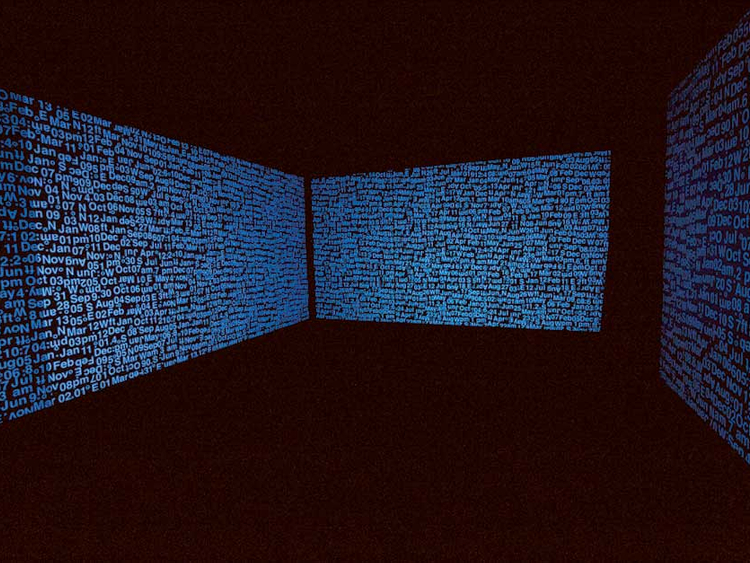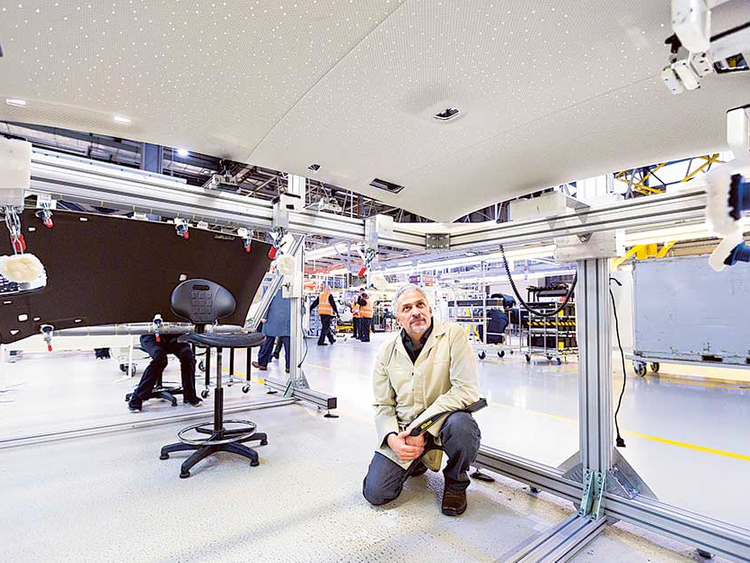Born in 1969, two years before the establishment of the United Arab Emirates and three years after oil was discovered in Dubai, the Emirati artist Mohammad Kazem grew up in a nation at the cusp of seismic change.
“My father was a Dubai cabdriver. During my youth, schools, hospitals, hotels and superhighways seemed to appear almost magically on the southern shore of the Arabian Gulf”, he says of the times as the desert transformed into an ultra-modern city with airports, skyscrapers and malls.
Rampant change inspired his interest in discarded objects he would find on his way back from school. Mundane, broken and unimportant to the eye, to Kazem these objects represented varied aspects of life and excerpts of different expressions.
“They fascinated me and I began to collect domestic detritus. Even today, I am still as fascinated by collecting and documenting information about seemingly unimportant objects, traces of our presence, within a particular environment.”
As a child, his interest in music and art didn’t go unnoticed. Kazem was learning to play the oud and his interest in art history panned through a gamut of Impressionist and Fauvist artists such as Cezanne, Monet, Matisse and Van Gogh. In early 1984, when the teachers at Tariq ibn Ziyad public school recommended higher studies, a family friend, who had heard about the Emirates Fine Arts Society in Sharjah, took Kazem to the institute to inquire about art lessons. Kazem was just fifteen at the time.
32 years later, he is one of the most prolific artists to emerge from the region; his love for documenting history through found objects and their coordinates refined to an art form. Almost as a crowning, this year, Rolls Royce Motor Cars announced Kazem as a fellow of their art programme. He joins the ranks of other illustrious artists such as Isaac Julien, Ana Maria Tavares and the Saudi Arabian artist Manal Al Dowayan who presented her commissioned work, ‘I Had No Wings’, at Art Dubai last year.
“Art and creative endeavour are at the heart of Rolls-Royce”, says Dr Alexander Steinbrueck, head of Rolls-Royce Art Programme.
“The Art Programme comprises new works commissioned in situ, partnerships with leading organisations, art talks with emerging and established artists, and art receptions around the world. It fosters creativity and enables artists to realise new projects and to explore new areas of their practice.”
Working with consultants across the globe, such as the well-known art patron Alia Al Senussi here in the Middle East, the programme selects artists who are commissioned to create in situ works, elements of which are incorporated into a one-off Rolls Royce car.
In continuum with his fascination for finding objects, through his 1999 work, Directions (Legs), where he first used GPS — the global positioning system used for navigation — to create artwork, Kazem shifted the centre of his works from the self to a handful of anonymous persons connected to a specific location designated by the GPS.
“I realised that a place in time so precisely defined by GPS coordinates dictated new circumstances and therefore new conditions and that these qualities were the carriers of an unpredictable outcome in the creation process,” he said.
Kazem deployed the GPS not only to calculate precise coordinates but to give new dimensions to his artworks by providing strict time and geographical anchoring that have now become the defining identity of his works.
Kazem chose an electronic tool to become his determinant, and quite literally, that tool led him to create the critically acclaimed, multi-part worldwide series, Directions.
Kazem’s commission for the Art Programme 2016 — which will be revealed later this year — is intended to be an ode to the craftspeople who painstakingly create each Rolls-Royce car.
On a trip to the home of Rolls-Royce in Goodwood in Chichester, UK, the artist met with the people who are working on a Bespoke Wraith car that will be produced in conjunction with the piece he was planning.
“This led me to map out the localities of these craftspeople from around the UK”, he explains. “These GPS coordinates will then be a reccurring theme in the metal-based sculpture that will comprise a stack of these data points melted together to form an abstract shape.”
In the car, his work will inform the Starlight Headliner — the customiSable, hand-perforated leather panel feature in the roof that lights up like the starry night thanks to delicately threaded fibre-optic ‘stars’.











